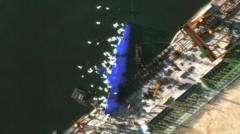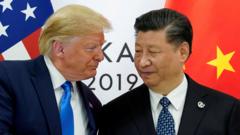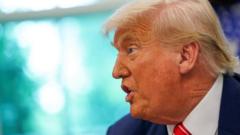### The meeting in Brussels highlighted a push for increased military spending amidst concerns over Russian aggression, leaving member countries to deliberate the path forward by the end of June.
## NATO Allies Divided Over Military Spending: A Crucial Decision Ahead

## NATO Allies Divided Over Military Spending: A Crucial Decision Ahead
### As defense budgets become a focal point at NATO, contrasting views on military expenditure reflect broader tensions within the alliance and international security priorities.
NATO allies gathered Thursday in Brussels to tackle a pressing demand from the United States: the goal of dedicating 5 percent of each nation's GDP to defense spending. The request arises from President Trump's insistence on strengthening military budgets in light of threats, particularly from Russia. However, while U.S. Defense Secretary Pete Hegseth voiced confidence that the alliance would agree on this financing level, many NATO members remain hesitant.
The discussions underscored a growing division among the 32 member states regarding the timeline for this significant increase, particularly as nations balance pursuing robust defense budgets with other pressing economic needs. Hegseth expressed an "almost near consensus" for the 5 percent target but admitted that some countries were still resistant to committing to such a steep rise from the current 2 percent guideline.
The urgency for heightened military spending looms larger for Hegseth, who noted, "When you consider the threats that we face... it’s critical." With the United States currently allocating about 3.4 percent of its GDP to defense, the implication of Trump's proposal to boost defense spending to $1.01 trillion for the next fiscal year underscores the scale of the challenge. Estimates suggest an additional $200 billion would be required for the U.S. to meet the 5 percent benchmark.
This pivotal conversation is set to reach a climax at the NATO summit in The Hague at the end of June, where member leaders will ultimately decide their collective future in military preparedness and financial commitment. The outcome could significantly shape NATO's response to perceived external threats, particularly as tensions with Russia persist on the international stage.




















